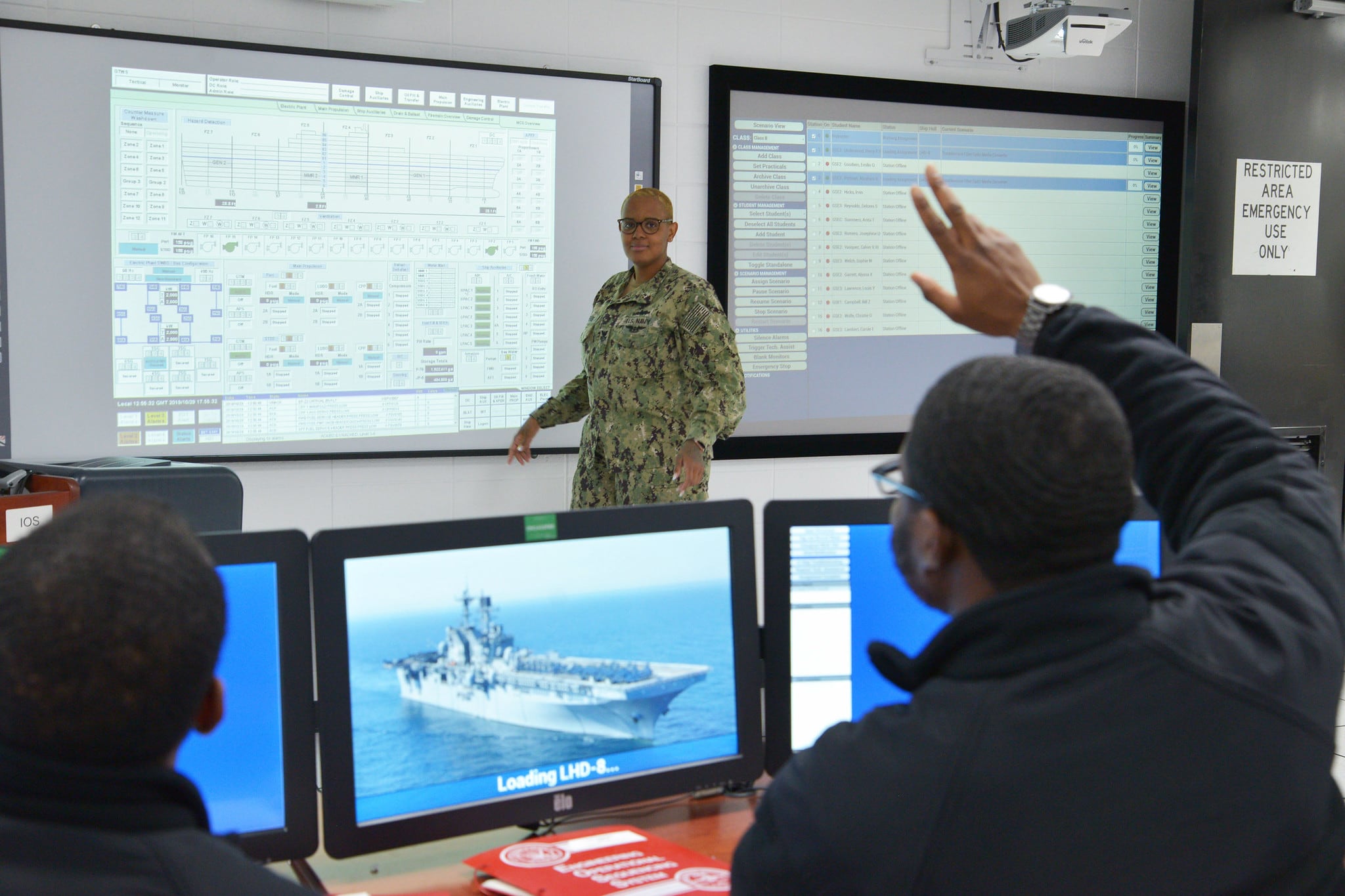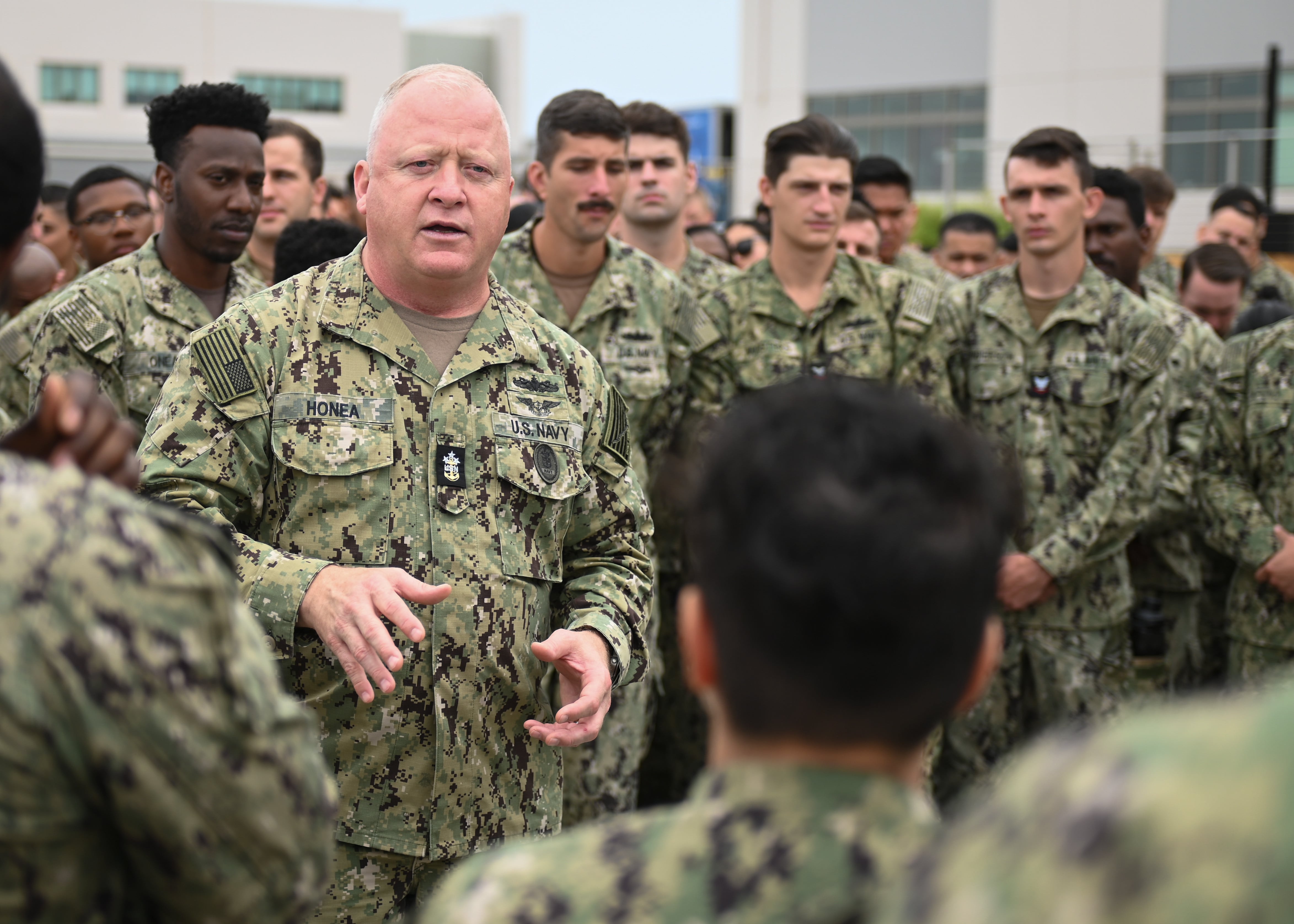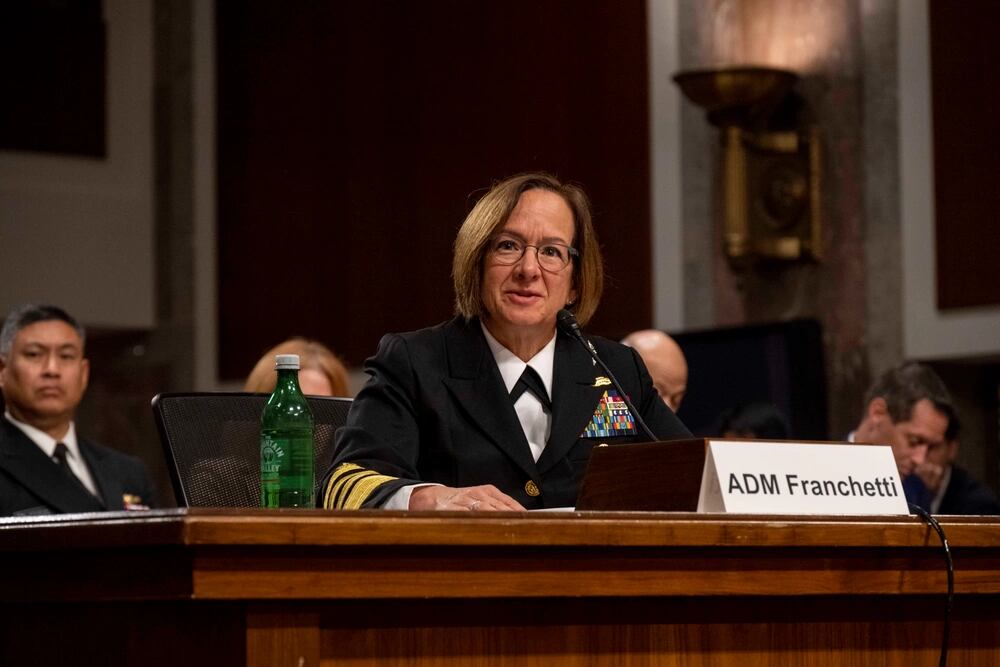Master Chief Petty Officer of the Navy James Honea wants to revamp and expand how the Navy is educating its sailors.
The Navy’s Enlisted Leader Development training aims to equip sailors with skills in character development, decision-making, self-awareness and ethics. But the Navy has largely distributed this training away from dedicated schoolhouses and, instead, dispersed it throughout the fleet.
This should change, Honea said.
“I don’t think we’re doing as well of a job with that as we should. Our people deserve better,” Honea told Navy Times in a Sept. 15 interview at the Pentagon. “And I like to be more deliberate in that approach.”
Right now, roughly 25% of the leader development courses are taught at the Naval Leadership and Ethics Center schoolhouses in San Diego and Dam Neck, Virginia. The other 75% are hosted by commands across the fleet and taught by certified senior leaders, known as Command or Chief Petty Officer Navy Leader Development Facilitator instructors.
But Honea is pushing to stand up more schoolhouses specifically dedicated to advancing sailors’ leadership skills, similar to the way the other services do. He is working alongside Chief of Naval Personnel Vice Adm. Rick Cheeseman to get that done.
“I would like to have, much like the other services, stand-alone brick and mortar schoolhouses for students to … receive this type of professional military education, delivered by professional facilitators,” Honea said.
“I think that those — coupled with the curriculum we have developed — will help make sailors that much better humans and help them work on and develop their own attributes and traits necessary to be better leaders and better connect with other people,” Honea said. “It’s going to make better teams.”
Instructors would be freed from their other duties to singularly focus on the education piece. Students would come for a week or two to complete the Enlisted Leader Development program in person, receive a certificate and then head back to their parent command, Honea said.
The program will become even more important starting in calendar year 2025, when completing the Intermediate Leader Development Course and the Advanced Leader Development Course become requirements to take the Navy-wide advancement exam to promote to E-6 and E-7.
One of the main benefits of setting up these schoolhouses is that it would provide standardization and guarantee that every sailor at every site gets the benefits of the full curriculum, Honea said.
“The way it’s being done right now, I don’t have control to ensure that, that same excellent experience is being delivered at every command,” Honea said.
RELATED

Community college expansion
The MCPON is also eyeing an expansion of the United States Naval Community College, which was established as part of a broader initiative to enhance the intellectual and cognitive development of naval leaders, so that its “scope is of a size that is extremely relevant to the fleet.”
The Navy kicked off the first phase of its community college pilot program in 2021 with almost 600 students from the Navy, Marine Corps and Coast Guard. Sailors may study a variety of subjects, including the nuclear field, cyber security, data analytics, English, math and naval ethics at various community colleges all across the country.

Then-Secretary of the Navy Kenneth Braithwaite said at the time that it is “imperative we have a more educated enlisted force, grounded in the understanding of current events, allowing them to add context to the actions they may be ordered to do.”
Additionally, the community college provides sailors, Marines and Coast Guardsmen the opportunity to use their tuition assistance or GI Bill benefits on higher-level degree programs.
The Naval Community College just reached its initial operating capability and is now enrolling up to 5,000 students for seven associate degree programs. It’s shooting to reach full operating capability by fiscal 2026, with an enrollment of at least 10,000 students who may choose from 15 initial associate degree programs.
Honea said he wants to build on this so more sailors can develop their education.
“I’m hoping to, in the near years, expand to 25,000 students enrolled in the U.S. Naval Community College,” Honea said. “And I would like to continue to expand on that so that it becomes more and more relevant and impactful to the sailors across our Navy.”
Recruiting challenges
Most of the services are facing a challenging recruiting environment. The Navy met its active duty enlisted recruitment goals for FY22, but it drained its Delayed Entry Program pool to the lowest level in 40 years to meet those goals. The program allows someone to join the Navy prior to their shipping date.
RELATED

However, the Navy won’t meet its recruitment goals this year. Acting Chief of Naval Operations Adm. Lisa Franchetti confirmed this month that the service expects to come up short for FY23 by roughly 7,000 sailors.
Military leaders have attributed these recruitment problems to more thorough medical screenings, fewer Americans eligible to serve and low civilian unemployment.
Franchetti told the Senate Armed Services Committee the Navy also needs to have a “conversation with America” about what the sea service can offer, so those who don’t live near Navy installations or coastal regions, and perhaps don’t know any sailors, will still become interested in joining.
Honea, who grew up in Lubbock, Texas, and wasn’t familiar with the Navy at all prior to enlisting, agreed with Franchetti.
“I think the Navy, of all the military services, is probably the most difficult to explain to the person that’s never been part of the Navy,” Honea said. “It’s hard to understand what the Navy is doing on the other side of the horizon.”
Honea said he himself considered joining one of the other services, but a Navy recruiter stepped in and changed his mind.
“I’d not even thought about talking with the Navy recruiter,” he said. “The Navy recruiter grabbed me, I’d been speaking with some of the other recruiters. He grabbed me up, took me into his office … and opened up his cruise books and just showed me a world of adventure and a world of opportunity that I had never imagined.”
Quality of life
But the Navy must address some quality of life issues to make it a more attractive job prospect, Honea said. As he’s talked with sailors and families across the Navy, he said the biggest barriers to service are inadequate pay and compensation, and dissatisfaction with housing and access to medical care.
“Some of the people who know who we are don’t consider us to be an employer of choice, because of the things … that they look at that might be barriers to that type of service, and we need to work on clearing some of that stuff up,” Honea said.
For example, Navy Times reported in February 2022 that hundreds of junior enlisted sailors and soldiers at Naval Support Activity Bethesda in Maryland lived with no hot water, broken air conditioning, rooms without functioning thermostats and broken locks. Following Navy Times’ investigation, the service moved sailors out of the affected rooms and vowed to fix the conditions.
Since then, the Navy has taken various steps to help sailors receive adequate housing. In May, the Navy implemented a barracks “bill of rights” to uphold “high quality” living conditions for sailors and to allow them to report issues without fear of retribution. The Navy issued the policy after then-Chief of Naval Operations Adm. Mike Gilday and fleet commanders concluded improved unaccompanied housing would raise morale.
Honea also said he is working with members of Congress and policymakers to change a law that bars the Navy from issuing a housing allowance to any junior sailor, E-3 or below, assigned to forces afloat.
“I think there is a lot of energy behind that with both our policymakers and with our lawmakers …that will give us greater flexibility to look into all kinds of other ways that maybe we can increase our barracks spaces,” Honea said. “Maybe we could enter into more of our private-public ventures.”
Overall, Honea said he’s encouraged by the direction the Navy is headed and said he senses there is a “positive energy” regarding changes the service needs to make.
His words to anyone considering joining?
“We’re going to give you opportunity that you could not have imagined, we’re going to give you an education, and put you in charge of operating and maintaining weapon systems that are the cutting edge and the best,” Honea said. “We are the most dominant maritime military force that’s ever sailed across the face of this earth in history. ... You come work for us, and we’re going to give you the skills, the training, the opportunity and all the responsibility that goes with that.”




